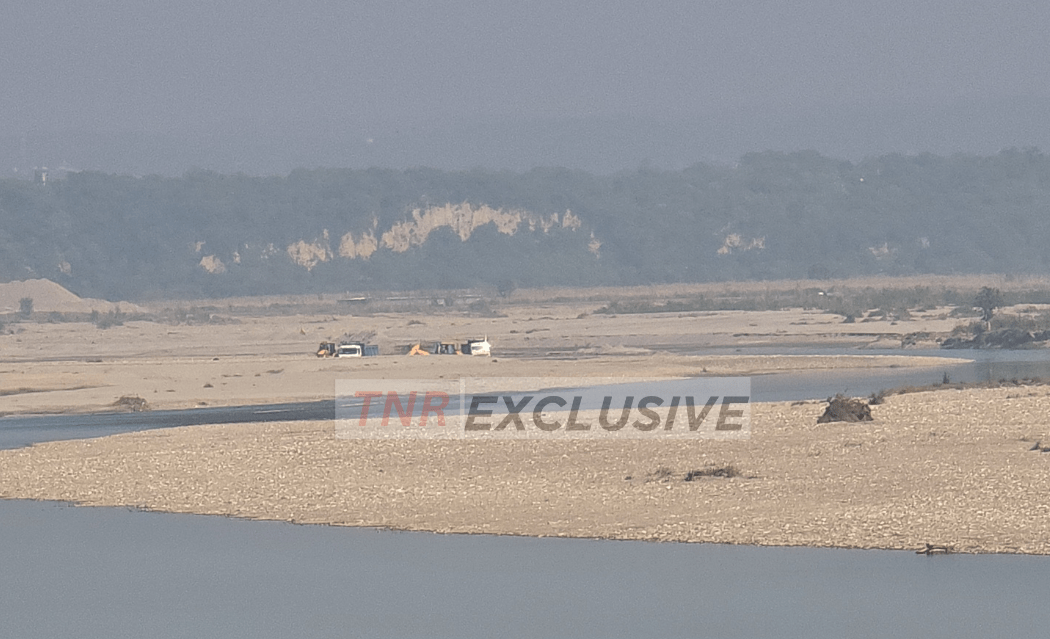S Gopal Puri
Dharamshala
In a development that raises serious environmental and legal concerns, The Newz Radar has obtained photographs and video evidence of what appears to be deep-bed mining activity in Beas river at Indora in Kangra district of Himachal Pradesh on November 19.
The visuals show heavy machinery, including earthmovers, deployed in the middle of the active riverbed, an action that is explicitly restricted under multiple environmental regulations.
According to the Himachal Pradesh Minor Minerals (Concession) and Minerals Prevention of Illegal Mining Rules, the use of heavy machinery inside a river channel without specific permission is prohibited. Additionally, several National Green Tribunal (NGT) directives bar mechanical extraction from within riverbeds, citing threats to river stability, groundwater tables and aquatic ecology.
Environmental experts consulted by The Newz Radar state that deep-bed mining — where the riverbed is scooped below permissible levels — can alter the natural course of the river, destabilise embankments, and increase the risk of flash floods during the monsoon. Such extraction can also create large pits within the river channel, posing safety hazards for villagers, livestock and seasonal flow patterns.
Local residents claim that mechanical mining in the Indora belt has been a recurring issue, with truck movement and night-time operations being frequently reported. However, this is one of the rare instances where clear day-time visuals of deep excavation inside the river channel have surfaced.
When contacted, officials from the Mining Department said they would examine the matter and verify whether any permissions were granted for mechanical extraction at this location and whether the activity captured on camera violates regulatory provisions. They confirmed that if found illegal, such operations may attract penalties, including seizure of machinery, fines and prosecution, under the Himachal Pradesh mining rules and relevant environmental laws.
Beas river stretch in Indora has long been considered sensitive due to its proximity to agricultural land and its shifting river course. Environmental groups argue that unchecked extraction worsens erosion and endangers bridges, link roads and riverbank settlements.






